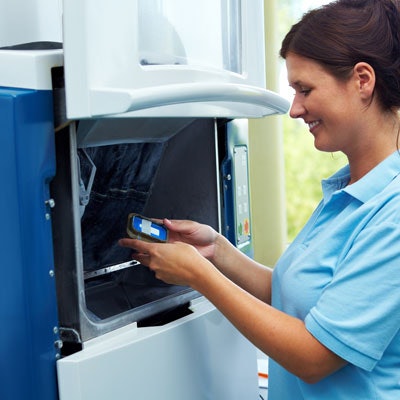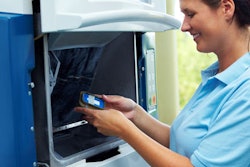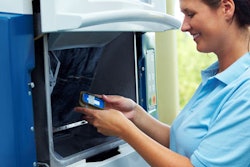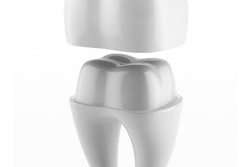
Knowing the mechanical properties of CAD/CAM materials allows practitioners to choose the right ones for successful restorations. Researchers put four such materials through their paces to see which were the toughest and most resistant to chipping.
Lava Ultimate, a nanofilled resin block, was the material with the best machinability among those they tested, they reported (Brazilian Oral Research, April 4, 2019).
"Materials with higher [brittleness index] are more susceptible to chipping," wrote the authors, led by Thiago Soares-Porto, DDS, PhD, of the department of comprehensive care at the Case Western Reserve University School of Dental Medicine in Cleveland.
Tested tough
The different compositions of ceramic materials affect their mechanical properties, such as flexural strength, fracture toughness, fracture resistance, hardness, and, brittleness index. The aim of the in vitro study was to better understand the performance of four CAD/CAM materials.
“Materials with higher [brittleness index] are more susceptible to chipping.”
The researchers selected the following materials for their study: feldspathic ceramic (Vitablocs Mark II, Vita North America) as a control group, lithium disilicate glass ceramic (IPS e.max CAD, Ivoclar Vivadent) in its intermediate phase, a leucite-reinforced glass ceramic (IPS Empress CAD, Ivoclar Vivadent), and a nanofilled resin material (Lava Ultimate, 3M). They prepared 52 specimens from the materials using a CEREC MC XL milling machine (Dentsply Sirona) and divided them into four equal groups (n = 13).
Slices were made from the blocks, and then the surfaces were polished. The researchers tested the materials in three categories: brittleness index, Vickers hardness, and fracture toughness. They also measured the interaction between Vickers hardness and fracture toughness.
The researchers defined hardness as the resistance to a permanent surface indentation, which is important because the hardness of a ceramic material influences polishing procedures, wear resistance, and machinability.
The IPS e.max CAD had the highest values for brittleness index and the highest average for Vickers hardness (see table below).
| Compositions and measurements of CAD/CAM materials tested | ||||
| Material | Vitablocs Mark II | IPS e.max CAD | IPS Empress CAD | Lava Ultimate |
| Flexural strength | 154 MPa | 130-150 MPa | 160 MPa | 150 MPa |
| Vickers hardness | 5.97 (± 0.22) GPa | 6.84 (± 0.16) GPa | 5.74 (± 0.20) GPa | 1.02 (± 0.06) GPa |
| Brittleness index | 2.31 (± 0.11) µm-1/2 |
2.53 (± 0.17) µm-1/2 |
1.77 (± 0.11) µm-1/2 |
0.91 (± 0.03) µm-1/2 |
| Fracture toughness | 1.39 (± 0.23) MPa m1/2 | 2.18 (± 0.23) MPa m1/2 | 1.43 (± 0.26) MPa m1/2 | 2.22 (± 0.33) MPa m1/2 |
| Vickers hardness/fracture toughness | 4.29 (± 0.49) | 3.13 (± 0.34) | 4.01 (± 0.59) | 0.45 (± 0.10) |
Daily clinical application
The researchers noted that this was an in vitro study and that more research should be conducted to develop a better understanding of materials' behavior.
They reported than an essential mechanical property, such as the brittleness index, can make a difference in the daily clinical application of these materials, they reported.
"The strong positive relationship found between the brittleness index and Vickers hardness leads to the conclusion that harder materials are the most sensitive to fracture," the study authors wrote.



















